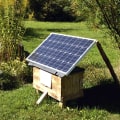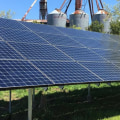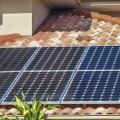Solar technologies convert sunlight into electrical energy using photovoltaic (PV) panels or mirrors that concentrate solar radiation. Solar photovoltaic technology · Solar performance · Solar radiation basics The amount of sunlight that hits the earth's surface in an hour and a half is enough to manage the entire world's energy consumption for a full year. This energy can be used to generate electricity or be stored in batteries or thermal storage. Although it is expensive to implement, solar energy offers a clean and renewable source of energy.
Once you've done all these calculations, you're likely to end up with just one number, the number of years it will take for a solar system to pay for itself by saving on its energy bills. If you live in a sunny part of the country and have high utility bills right now, you could be looking for a system that reaches this point in five years. Other homeowners may have to wait 10 or 20 years to reach this point. Depending on where you live and the size of your system, it can take, on average, between 10 and 20 years to break even for a solar installation.
Solar energy is energy from the sun that is converted into thermal or electrical energy. Solar energy is the cleanest and most abundant source of renewable energy available, and the U.S. It has some of the richest solar resources in the world. Solar technologies can harness this energy for a variety of uses, including generating electricity, providing light or a comfortable indoor environment, and heating water for domestic, commercial or industrial use.
Solar energy, radiation from the Sun capable of producing heat, causing chemical reactions or generating electricity. The total amount of solar energy incident on Earth far exceeds the current and anticipated energy needs of the world. If properly utilized, this highly diffuse source has the potential to meet all future energy needs. In the 21st century, solar energy is expected to become increasingly attractive as a renewable energy source due to its inexhaustible supply and non-polluting character, in stark contrast to finite fossil fuels (coal, oil and natural gas).
Typical cost factors for solar energy include the costs of the modules, the framework to support them, the cabling, the inverters, the cost of labor, any land that may be required, the connection to the grid, the maintenance and the solar insolation that location will receive. Among the most common devices used to capture solar energy and convert it into thermal energy are flat plate collectors, which are used for solar heating applications. Because the intensity of solar radiation on the Earth's surface is so low, these collectors must have a large area. Following Russell Ohl's work in the 1940s, researchers Gerald Pearson, Calvin Fuller and Daryl Chapin created the silicon solar cell in 1954.For example, solar batteries store electricity and can be used during periods of low solar production.
When the sun shines on a solar panel, the energy of sunlight is absorbed by the photovoltaic cells of the panel. With the increase in the adoption of electric vehicles, there is also a growing need for electricity to run vehicles, a perfect option for solar energy. Concentrated solar thermal energy (CSP) systems use mirrors to reflect and concentrate sunlight on receivers that collect solar energy and convert it into heat, which can then be used to produce electricity or store for later use. The output power of the photovoltaic system also depends on the ambient temperature, wind speed, solar spectrum, local dirt conditions and other factors.
In addition to this basic information about solar energy, you can find more information resources on solar energy here. When it comes to installing solar panels and switching to a greener energy source, there is no one-size-fits-all approach. The Stirling solar dish combines a parabolic concentrator plate with a Stirling engine that normally drives an electric generator. When photons, or light particles, collide with the thin layer of silicon on top of a solar panel, they eject electrons from silicon atoms.
Although solar energy had already been captured and converted into usable energy through various methods, only after 1954 did solar energy begin to become a viable source of electricity to power devices for long periods of time. Solar ponds are quite expensive to install and maintain and are usually confined to warm rural areas. . .












Leave a Comment